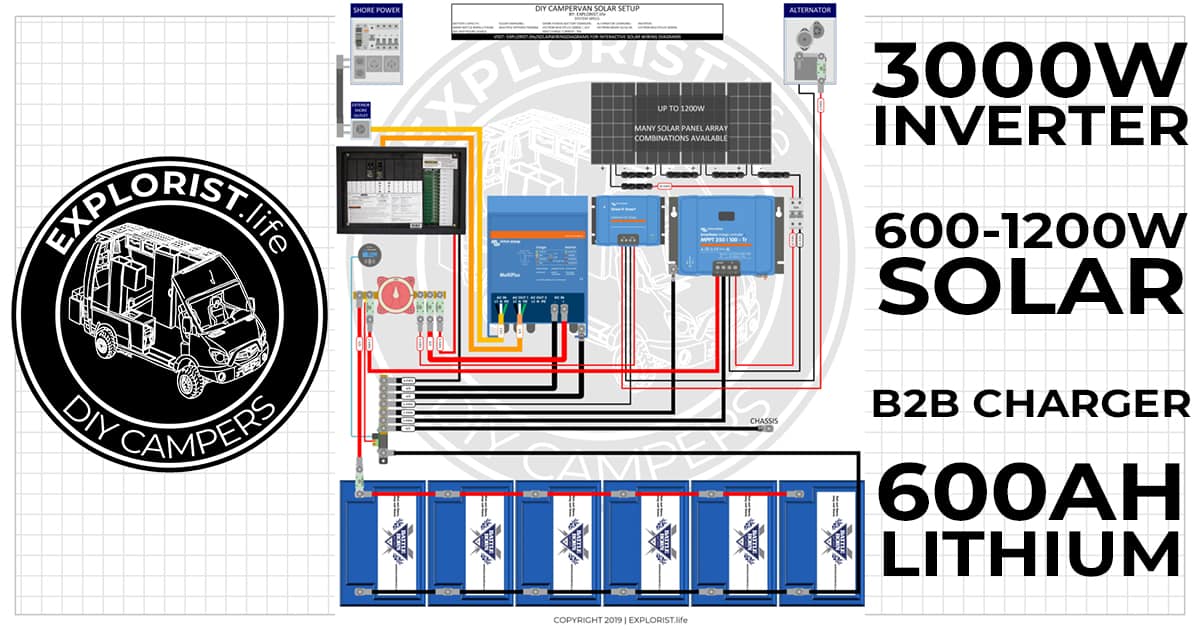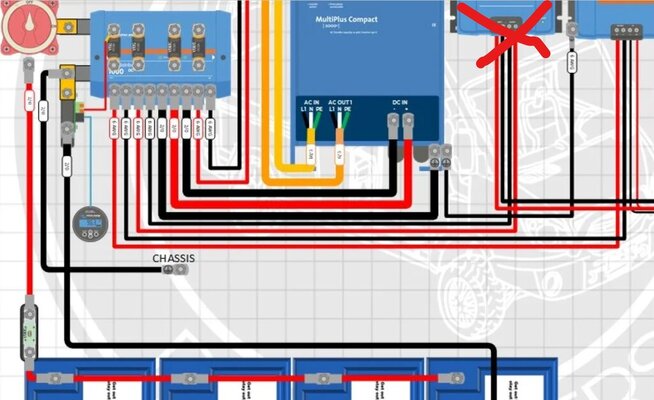Contributor
Well-known member
- Joined
- Jul 9, 2022
- Posts
- 1,423
My trailer did not run a separate cable from the converter to the battery, only for the positive. The chassis was the only path for the return until I added one. I'm surprised you haven't seen it as that method is universally used when the battery is in the tongue and the load panel is in the rear.
Lot's of discussions about that and the arguments for and against it. Some say that because the frame is so Large it's better than the wimpy 6 or 8 gauge the factory uses for the positive side. Many people don't realize that the charging is a loop and there are voltage drops on both paths.
I found that many people were complaining that their Wf8955 converter wasn't going into bulk mode so I decided to experiment. I did a discharge test on my battery bank and got the voltage open circuit to 12.5. I then hooked up to shore power and measured just over 20 Amps charge current. After adding a 6 gauge cable to the positive side, I was getting a little over 30A and finally with another 6 gauge on the return I was getting close to 45A. So the problem for many people was the voltage drop was current limiting charge current to their batteries.
Lot's of discussions about that and the arguments for and against it. Some say that because the frame is so Large it's better than the wimpy 6 or 8 gauge the factory uses for the positive side. Many people don't realize that the charging is a loop and there are voltage drops on both paths.
I found that many people were complaining that their Wf8955 converter wasn't going into bulk mode so I decided to experiment. I did a discharge test on my battery bank and got the voltage open circuit to 12.5. I then hooked up to shore power and measured just over 20 Amps charge current. After adding a 6 gauge cable to the positive side, I was getting a little over 30A and finally with another 6 gauge on the return I was getting close to 45A. So the problem for many people was the voltage drop was current limiting charge current to their batteries.


